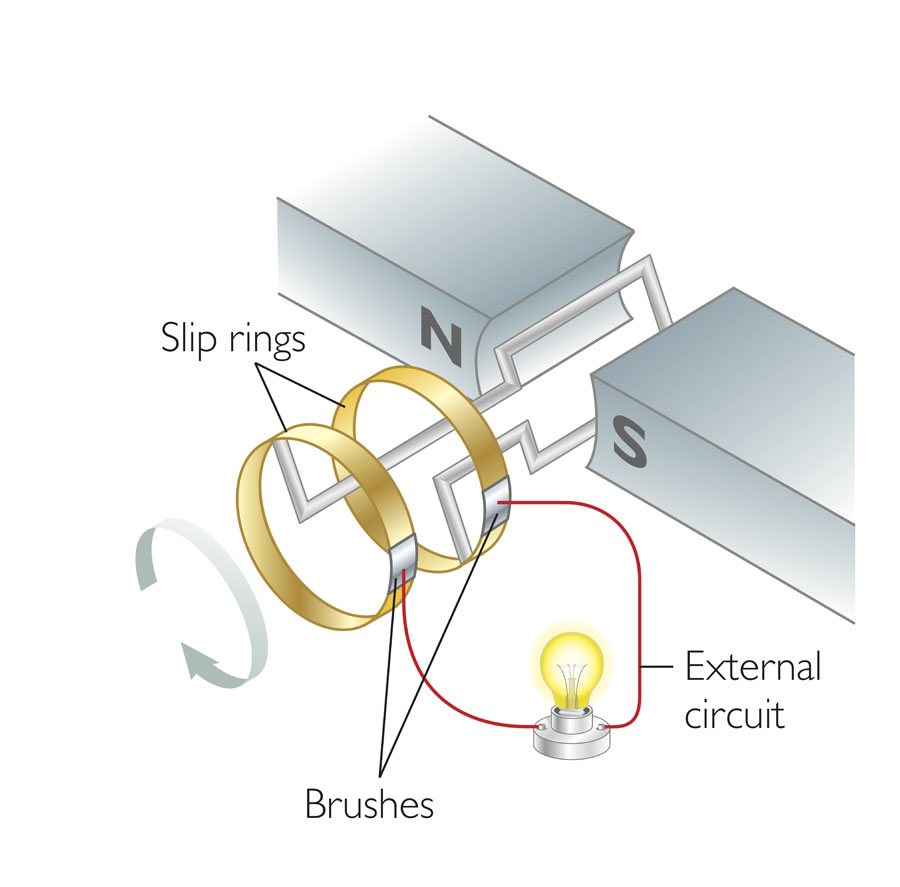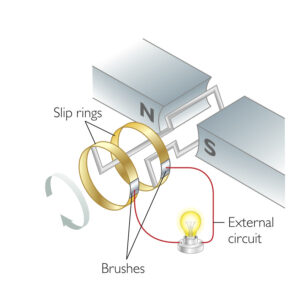What is a slip ring?
In electrical engineering terms, a slip ring is a method of making an electrical connection through a rotating assembly. It enables the transmission of power and data signals from a stationary to a rotating structure.
A slip ring is one of two or more continuous conducting rings from which brushes take or to which they deliver current in a generator or motor.
How does a slip ring work?
Slip rings solve the problem of how to safely run electricity to a continuously rotating part of an assembled product.
Constructed of two main parts, a metal ring is generally the rotating element, whilst a brush contact is usually fixed.
The outer part (usually the brush) is called the Stator, because it is stationary, and the internal part (the ring) is called the Rotor, as it rotates.
As the rings rotate, an electrical current is conducted through the brushes, making a continuous connection.
Where are slip rings used?
Slip rings are used on a broad range of rotating objects to transfer electrical signals from a stationary to a moving part. Common uses are:
Defence: Rotating tank turrets, radar and surveillance systems
Medical: Microscopes, scanning equipment
Renewable energy: Wind turbines
What are some other names for slip rings?
Slip rings have many other commonly used names; the main ones are listed below and there are probably many more terms used as well.
- Rotary electrical interfaces
- Rotating electrical connectors
- Collectors
- Swivels
- Electrical rotary joints
Slip rings are also sometimes called a commutator. However, these have a different construction and so are not strictly the same thing. Commutators are used on DC motors and generators and are segmented whereas slip rings are continuous.
How are slip rings quality checked during manufacture?
Most slip ring manufacturers will carry out QC checks on 100% of goods prior to despatch. Standard tests include continuity, insulation resistance, dielectric strength, torque and rotational tests to ensure the slip rings are fit for purpose in the end product.
Thanks to MK Test Systems for compiling this report.
About MK Test Systems
MK Test Systems have been a leading manufacturer and global supplier of automatic electrical test systems since 1991. With customers in 34 countries, many of the world’s leading aerospace, defence and rail companies rely on MK Test Systems. Visit www.mktest.com to learn more.

































































